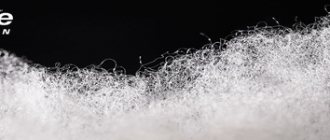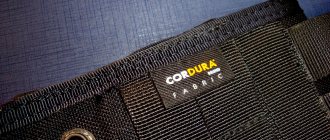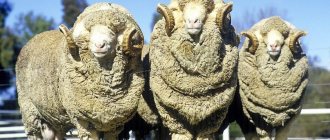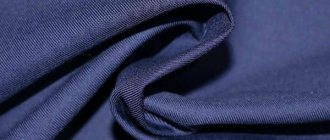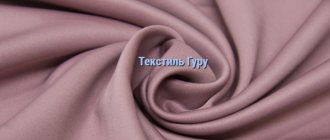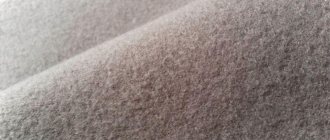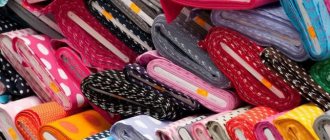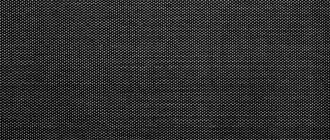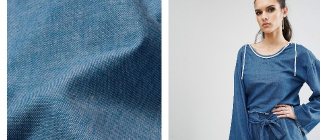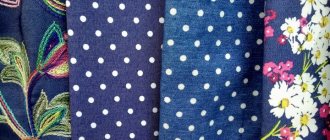The rapid development of the chemical industry has brought many new materials to the textile industry. Synthetic fibers are used to make various fabrics, including for technical purposes. The main advantage of using it is the cost of raw materials, in contrast to natural components that require special resources and additional labor costs.
Polypropylene, what kind of material it is and where it is used, is useful for every average person to know. It is important to note that this is one of the most common non-woven fabrics, cheap and popular. Belongs to the group of synthetic polymers.
Description
Polypropylene is a multifunctional material used in the production of technical products and as upholstery. Denoted by the abbreviation RR.
Technical fabric is dense to the touch, depending on the type it has different texture and density. One example is polypropylene fabric, which is used to make bags for packaging sugar. The material is moisture resistant and can withstand low temperatures down to -70°C. The upper limit of positive temperatures is indicated by + 60°C. At readings of + 160°C, the synthetic thread melts.
Non-woven fabrics are distinguished by a double-face structure and are produced by a special weave of threads (the differences are visible in the photo). The material is plain-dyed, plain.
Modifications of fibers intended for use in the textile industry have elasticity and low specific gravity (PP does not sink in water). The wear resistance and mechanical strength of these materials are average or lower. Textiles are resistant to chemicals, but vulnerable to UV rays.
Production of PP fabric
Polypropylene thread is made by extruding or blow molding molten raw materials (at a temperature of 100°C), followed by cooling in an air chamber and winding onto bobbins. At the final stage, the fibers are cut according to the specified parameters.
During the production process, 2 types of synthetic threads are obtained: filament (twisted from ultra-fine fibers) and staple. PP fabric is made by gluing or pressing (passing through heated calender rolls). In some cases, continuous length fibers are used (for example, in the manufacture of spandob).
PP in its pure form is rarely used for the manufacture of upholstery fabrics, car covers and carpets. Other synthetic components (polyester, polyamide, etc.) are added to the polymer fibers.
Reasons for growing popularity
One of the main reasons for the rapid growth in the use of polypropylene is the expansion of the scope of its application, displacing polymers such as polystyrene and PVC. The latter are the subject of dissatisfaction among the environmentally concerned part of the population, which is reflected in legislative initiatives in European countries. Polystyrene and PVC are persecuted on two grounds - waste disposal and toxicity. For this reason, many manufacturers of plastic products are increasingly choosing polypropylene.
This material is non-toxic, lightweight and highly recyclable. Polypropylene also has a lower cost. Due to this, it is actively used in the manufacture of engineering plastics in the fields of electronics, automotive industry, etc.
Composition and formula of the material
Polypropylene fiber is obtained from petroleum products by catalytic or thermal cracking. Granules of the substance are produced by the polymerization of propylene. The monomer is extracted from crude oil in a gaseous state, then subjected to a chain polymerization process in the presence of a catalyst (titanium-chloro-aluminum). The technology provides for certain temperature conditions (94 – 96°C) and a pressure of 30 atm.
After 8 hours, polymerization results in a solid plastic material in the form of granules. Using high-temperature exposure, propylene resin is obtained, mixed with fillers, dyes, plasticizers and stabilizers. After cooling, the resulting raw materials are used to produce granules or ingots.
The chemical formula of polypropylene looks like this: (C₃H₆)n or (nCH2=CH(CH3) → [-CH2-CH(CH3)-]n). The most famous enterprises producing RR are Borealis, SIBUR, ExxonMobil Chemical, LyondellBasell, SABIC, etc.
Characteristics
To understand the question: PP material, what is it, it is necessary to study the technical characteristics and description of the main properties.
Properties | Indicators |
| Raw material type | Synthetic chemical |
| Weaving method | Non-woven fabric obtained by gluing raw materials (fibers), special weave |
| Density of PP, g/cm3 | 0,90 – 0,91 |
| Water resistance | good |
| Hygroscopicity,% | 1 – 5 |
| Moisture absorption rate | Below average |
| Breathability | Small |
| Vapor permeability | Low |
| Electrification | Noticeable |
Open to see the entire table
| Side | Double-faced canvases |
| Coloring methods | Plain painted plain |
| Manufacturer | Russia, China |
| Standardization | GOST 26996 – 86 |
| Price | Low |
Reinforced concrete
The biggest disadvantage of reinforced concrete is that it is susceptible to corrosion. Over time, a reinforced concrete treatment facility loses its tightness. Wastewater, a very aggressive chemical environment, destroys reinforced concrete at an average rate of 2 cm per year. Thus, the reinforced concrete body of a treatment plant with walls 10 cm thick will lose its tightness after 5 years, and 20 cm thick - after 10 years, untreated wastewater will begin to seep into the ground, penetrate into groundwater and aquifers, and the treatment plant will become unsuitable for further use. operation.
Is polypropylene harmful?
The use of propylene in various applications is due to the safety of the material. PP, when handled, maintained and disposed of correctly, does not pose a danger to human health and the environment.
PP is used to produce hygiene and medical supplies and plastic utensils. Allergic reactions caused by polypropylene sheets are rare.
Expert opinion
Alyona
Fabric expert and technologist Alena Khlebnikova is ready to answer your questions.
Write to us
All products are marked PP. In some cases, the manufacturer indicates the maximum permissible temperatures under the abbreviation. Usually it does not exceed 60°C. If the rules are followed, polypropylene products are completely safe for both people and the environment.
When the above parameter is heated and during the production of fibers, the raw material releases harmful substances: phenols, volatile fractions of formaldehyde, heavy metal salts, etc. Therefore, special requirements are placed on production conditions. You cannot heat food in dishes made of light plastic and use PP food containers for long-term storage of food.
Goods for children
The exceptional safety of the material allows it to be used for the production of children's products.
Dishes, household items, toys and many other products for little ones are made from polypropylene.
The combination of several of its properties - environmental friendliness, high wear resistance, strength - determine its widespread use in everyday life.
World consumption of polypropylene is increasing every year. Its share in the production of consumer goods is steadily growing. It is gradually capturing new market segments, displacing less technologically advanced polymers, primarily polystyrene and PVC. Inferior in terms of environmental friendliness, they are gradually losing their position in the global market. Under public influence, European legislators are slowly but surely clearing the way for new technologies. Such important indicators as non-toxicity and easy disposal confidently make it a leader.
Another important factor contributing to the growing popularity of the substance is its low price compared to its competitors. Cost is the determining criterion in the production of any product, and therefore manufacturers are increasingly turning their attention towards cheaper and more technologically advanced materials.
The prospects for this high-tech material are very bright. It is obvious that its percentage in world consumption will increase. This is facilitated by constant research and the emergence of new technologies and modifications of polypropylene. Most likely, this will continue until more advanced synthetic materials appear, but even then propylene will be widely used in industry and the national economy.
How PVC differs from polypropylene
Non-woven polypropylene is widely used for various household needs. The material is used in construction, medicine, and carpet production. It is used as an additive in concrete mixtures and for the manufacture of reinforcing mesh. Used as roofing roll material and insulator (for braiding cable elements).
PVC is considered an alternative inexpensive option. Thanks to additional components (plasticizers, stabilizers, fillers), polypropylene has superior properties to polyvinyl chloride: it has less elongation when heated and compressibility when cooled, demonstrates increased density and resistance to mechanical damage.
Possible areas of use
It is noteworthy that in terms of its popularity, polypropylene is not the most widespread polymer. In the industrial sphere, it yields the first two places to polyethylene and polyvinyl chloride. However, this does not indicate some of its shortcomings that limit its use. The possible areas of application of the material are quite numerous.
If polyethylene in general has reached the peak of its use, then polypropylene, on the contrary, is rapidly increasing the volume of production of products made using it. At the same time, the prospects for use, which are associated with the possibility of adjusting the properties and expanding the range of products, are clearly visible.
Kinds
Manufacturers of synthetic nonwoven fabric offer consumers several types of PP:
- Transparent. Strong, durable material produced without coloring additives.
- Color. The disadvantage of such a canvas is considered to be the instability of color when exposed to sunlight (fading).
- Reinforced. Used in construction. Increases strength and has elasticity.
- Spunslace is a material with a smooth surface, a type of woven polypropylene.
- Thermobond and spunbond are used for the top layer of hygiene items (pads, diapers), in the production of wet wipes, shoe covers, and tablecloths.
To increase moisture resistance, the fabric is treated with a special method. Laminated material is used in the production of protective coatings and packaging products.
All types of non-woven and woven PP are recyclable. The main disadvantage of polypropylene is its inability to decompose under natural conditions.
Application
Since the middle of the last century, polypropylene fibers began to be used in the manufacture of fabrics for sewing sportswear and thermal underwear. In extreme conditions during fires and explosions, the fabric began to melt and contributed to life-threatening burns. Therefore, the innovative idea had to be abandoned. Currently, PP thermal underwear is rarely used. It is not recommended to wear it for a long time.
The material is used in various fields and the following things are produced from it:
- carpets, mats, rugs;
- curtains;
- decorative items;
- production of thermal underwear;
- building materials: panels, floor coverings, flexible roofing, geotextiles (sheets and fabrics for cutting);
- containers and bags for the food industry and trade;
- packaging materials;
- car seat covers;
- tablecloths;
- as components for the production of mattresses;
- upholstery for sofas;
- automobile filters;
- disposable tableware;
- items for hygienic and medical purposes. For example, a diaper for children consists of several layers of different types of PP.
